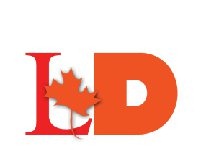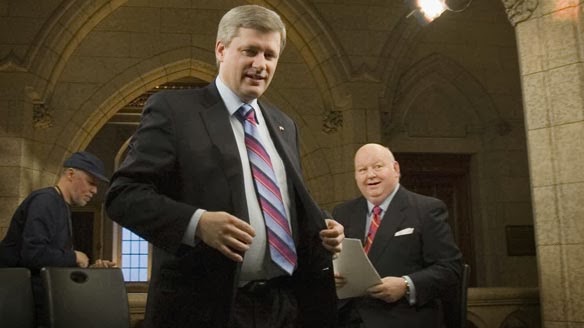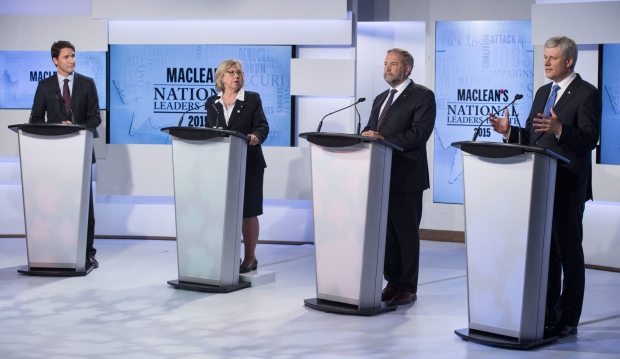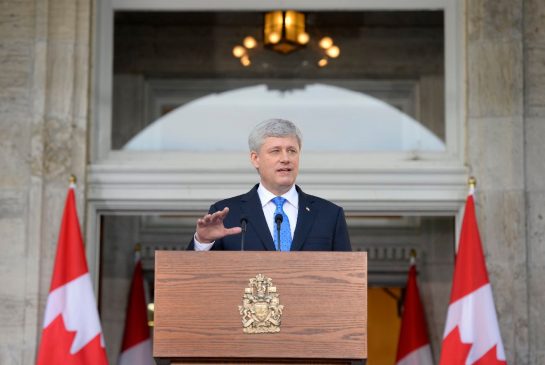
Opinion: Liberal-NDP Merger: A Disaster in the Making
![228452_120550024692501_120546501359520_161119_2993981_n[1] 228452_120550024692501_120546501359520_161119_2993981_n[1]](https://politicalscene.ca/wp-content/uploads/2011/06/228452_120550024692501_120546501359520_161119_2993981_n-25255B1-25255D_thumb-25255B1-25255D-1.jpg)
It is no secret that the Conservatives won their long awaited majority because of the NDP surge that split ridings in Ontario. It is no secret that the vote split between the two center-left parties has been the biggest factor in the continued growth and stability of the Conservatives.
While people who are for it state that the merged parties would have formed a 186 seat government in the last election, it is extremely unlikely that the merge will happen without voters looking elsewhere. There are certainly reasons as to why Liberal voters didn’t vote NDP and why NDP voters will never vote Liberal. Not to mention that throughout the history of the NDP, the Liberals have always been their favorite target.
With an NDP culture of Liberal-hatred, a common trait with the Conservatives, it has become a wonder whether the mission was to destroy the Conservatives or the Liberals. In the 2011 election, while the NDP hammered both the Liberals and Conservatives, it appeared that the theme from the war room was ‘anything but Liberal’ while 60% of the population that voted feared a Harper majority while the other 40% are at odds.
Getting down to the nitty-gritty, an Environics post-election survey suggests that only 21% of Liberal voters supported the idea of a Liberal-NDP merger. Not to mention that other polls have suggested that the bulk of both the Liberal and NDP voters listed Conservative as their second choice on the ballot. In order to overturn the results of the last election, a University of British Columbia election forecaster noted that 79% of Liberal voters would need to support the merger.
Side Note:
This is how the following class of voters would react if their party disappeared. Seeing as to how repelled they are to each other, a merger would have the same results. Take the sum of the 33% of Liberals that would shift their vote to the NDP and 38% of NDP that would support the Liberals and this would be the amount of support that would remain. If they merged, they would only receive a maximum of roughly 71% cumulatively of the vote they received in 2011.
If the Liberal Vote Collapsed,
The Conservatives would gain 23 seats and NDP would gain 11
- 2/3 Liberals would go Conservative if the party disappeared
If the NDP Vote Collapsed,
The Conservatives would gain 40 seats and Liberals would gain 19 while the Bloc Quebecois would gain 43
- 40% of NDP voters would go Conservative if the party disappeared
If the NDP Vote Collapsed and the Bloc Quebecois wasn’t an option,
The Conservatives would gain 63 seats while the Liberals gain 43
- 62% of NDP voters would go Conservative if the party disappeared
Resource: Election Forecaster
Liberals who were surveyed on their reasoning for voting Liberal chose the candidate as the overall reason. If the Liberal candidates stay in a merged party, it is likely that the supporters of the candidates will stay and form a big chunk in the rest of English Canada.
Looking at Quebec, a very unstable political landscape that determines the rise and fall of many political parties overnight, this merged party would run into problems. The NDP will have a hard time keeping its seats in Quebec as they try to please the nationalists and separatists at the same time. If the NDP merged with the Liberals, a stronger stance against Quebec separation would be adopted by the party which would send most of those voters back to the Bloc Quebecois.
The biggest weight on the Liberal party in Quebec has been the sponsorship scandal and should the Liberals and NDP merge, many of the NDP voters that voted for change would be turned off. Meanwhile, Liberal voters outside Montreal would turn to the Conservatives.
The forecaster made a seat prediction and stated that a Liberal NDP merger could land an election result where the Conservatives strengthen their majority to 180 seats, the Coalition gets 120 seats and the Bloc Quebecois would get 10 seats. Each of these would be give or take.
Note that it would take 79% of Liberal voters to vote for the new party for it to overturn the results.
The bulk of Liberal voters can be seen as relatively center-center right and vote for the party because of the social policies that the Conservatives represent. Also take a note that Layton’s $70 billion in new spending plan wouldn’t sit well with many Canadians who are conscientious about the economy. Taxing business is a bad idea, and Layton and the NDP tend to make the terms ‘big oil’, ‘big banks’, and ‘big business’ their central talking points when they take the side of Labor unions.
When investors heard that the NDP was gaining ground – whether its supporters read and supported its platform or not – markets slumped which shows a big discomfort in the business community. This can be seen in two ways, one way is that business is abusing its labor force and the labor force will finally have a voice, or the regulations and restrictions, and taxes, that will be put on the businesses will drive their headquarters out of Canada and force these businesses to shrink to be able to afford the new regulations.
Note that a tax hike to business translates in higher prices, and an environment where these businesses leave the country and well, less revenue for that $70 billion spending plan and job losses. Do the math and it sums to large deficits and high taxes, or a slap in the face to the NDP program: large cuts. For those skeptical of this view, while Layton chanted that it was checked by economists, he was forced to cut a large part of his environmental plan and go back on his idea of centralizing the Bank of Canada midway through the campaign because the numbers didn’t add up.
This in itself drove voters, Liberal voters, to vote blue as they didn’t see a chance for the weakening Liberals who proposed a greatly lessened extent of a similar framework and voted Conservative in fear of the NDP – this is notable in Ontario where the entire business community went from Liberal to Conservative.
However, a merger would stop that vote split that caused 16 seats to go Conservative – enough seats to prevent a majority. Within 4 years, things can change. The Progressive Conservatives under Campbell after Mulroney left crumbled to 2 seats as Chretien’s Liberals took over.
In Quebec, the political landscape can change overnight. A good example is the Action Democratique du Quebec Party (ADQ) which was lead by Mario Dumont. Current Premier Jean Charest has had 3 mandates. The first was a majority with Parti Quebecois Official Opposition and the second was a shocker. In the second election, Quebec entered a minority government where the PQ was sent to third party position as the ADQ became a massive Official Opposition. In 2008, Charest copied Harper and declared an election on the account that the opposition parties didn’t want to cooperate and work together. Unlike Harper, however, Charest managed to come back with a majority with the ADQ being wiped out to only 4 seats.
In 4 years, a merged Liberal-NDP party could stand different grounds with voters, end the split and form the government. Or, the NDP could collapse and the Liberals come back kicking with fresh leadership – notably Trudeau – and a new platform that will hopefully return their party to its identity as being a more centrist party – rather than the recent leftwing shifts in 2008 and 2011 which turned off voters. Or, the NDP wipe out the Liberals completely and form a government, likely a minority one.
However, apart from the Bloc Quebecois and the Greens, depending on whether their votes concentrate enough in ridings to get seats, the merged party could bring a two-party dynamic to Canada. This would mean shifts back and forth for four year terms – or eight if reelected, just like in the United States.
While a two-party system directly solves the vote-split problem for both the left and right, it means that for each term, there is no Opposition as they can holler and scream and the House of Commons will approve legislation with the majority of MPs being part of the governing party.
From these lenses, a Liberal-NDP merger could be a disaster in the making, unlike the right-wing merger that brought us Harper’s Conservatives. Maybe if the NDP didn’t put all their resources into attacking the Liberals and cooperated with them to get rid of a mutual enemy, maybe the NDP would have more influence and power today than its 102 seats that ironically have less say in today’s Parliament as Official Opposition than as a fourth party with less than half of that.
Perhaps if the NDP hostility to the Liberals would have ended, the Conservative’s anti-Liberal propaganda wouldn’t have been so effective and they wouldn’t have swayed so many Liberal voters to become small-c Conservatives. However, if one thing is for sure, the Liberals need to learn that their name and historical reputation won’t guarantee them votes anymore and that they will have to work.
This being said, whether they merge or not, the Conservatives will have the advantage if they continue the current track and don’t run into big trouble or anger too many people with their upcoming cuts.
Whether it be vote splits or a lack of confidence in each other, a merged opposition is essentially forcing two hostiles to work together and regardless how similar they are becoming, their internal rivalries will keep them from progressing and the NDP’s ‘momentum’ will send them in the power-hungry direction and we will all witness a disaster in the making.
The NDP can easily fall into the same predicament as the Liberals if they put power ahead of principle, something that has ultimately killed the Liberals to date. Being the opposite of the Conservatives is good to get attention and political points, although a drastic shift to the left would be detrimental to our right-leaning economy.
Four years won’t be a long ways away and while merger talks will be in the air, it is less likely that it will happen. Looking at the numbers, it would be bad political strategy and would strengthen the Conservatives – unless they do something bad enough to scare their hardcore and soft-core support away – like what happened to the Liberals with the sponsorship scandal.
The real solution to the vote split and future vote splits would be a new voting system that makes every vote count for the country and not the individual ridings.
What do you think? Is a Liberal-NDP merger a recipe for disaster?



